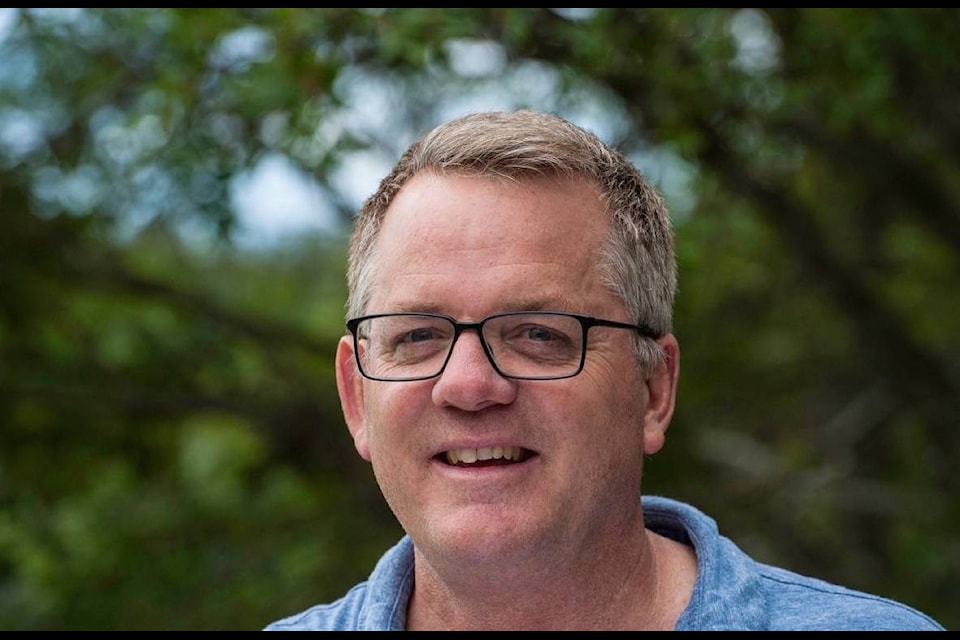Of all towns in B.C. with populations of 10,000 or less, Nelson has the greatest risk of being destroyed by a wildfire, Bruce Blackwell told the Star in 2018.
Does he still think that?
“Yes. It hasn’t changed,” says the North Vancouver-based wildfire consultant.
“We will lose communities before we fix them,” Blackwell says. “I’m not saying we’re going to lose Nelson, but there will be more that burn before we get a chance to fix them. Fort MacMurray was a classic one. I worked on their fire management plan. It was finished in February, and it was burned out by the end of May.”
Specific high-risk forests around Nelson and Harrop Procter and in West Arm and Kokanee Creek Provincial Parks have been identified and mapped since 2010 (partly by Blackwell himself), and the idea was to treat those areas by thinning the trees, limbing them up to a certain height, and getting rid of dry undergrowth and deadfall.
Only five per cent has been done
Only five per cent of that work has been done, according to John Cathro, a Kaslo forest consultant who did much of the mapping work with Blackwell.
Cathro says that is because the provincial government’s delivery and funding models keep changing, causing confusion for regional districts, municipalities, and First Nations.
Some of the work in high-risk areas near Nelson is being done this year, and Blackwell says he does not mean to discredit the local people doing that work (RDCK, City of Nelson, BC Parks), but he says they are a victim of provincial government bureaucracy.
“The system doesn’t move fast enough for this issue.”
The problem lies in the nature of government, he says.
“The bureaucracy is only capable of going so far in any issue, it doesn’t matter whether we’re talking healthcare, education … but for this issue, we need to go faster. And I don’t know how you change the pace at which we go.”
Doing just the bare minimum
Chilliwack-based wildfire consultant Bob Gray is equally frustrated.
The real problem, he says, is on Crown land that is tenured to timber companies.
Gray says the provincial government is reluctant to do anything other than a bare minimum of field treatments on Crown land because that might constrain the timber harvest.
“The focus is still timber, timber, timber. Maintaining the cut.”
But he says it is possible to maintain the cut and reduce fire risk. Companies could grow fewer and bigger trees and clean up the ground below them. But that would mean some big changes in forest management.
“The premier was saying a year ago that we need to shift the focus to less gross density to bigger piece sizes so that each piece has more value. That means lower density stands, and we just manage them better.”
Piece size means the size of sawn material that can be cut from a tree.
“If we’re managing lower density and bigger piece sizes, we can also manage for fire then at the same time. And that’s just not happening.”
Thinning, burning, and watersheds
Gray says much of the thinning being done is not enough, and that the forest floor has to be burned afterwards.
“The science is very, very clear that if you just do thinning, you’re not really solving much of the problem. You really need to clean up the surface fuels.”
And then there is the issue of watersheds. Provincial policy prioritizes the protection of communities and their high-value assets like telecommunications infrastructure. But watersheds are not included as a priority, which should be of interest to Nelson since we get our water from the surface of slopes in a high-risk forest.
“If we destroy a watershed, you might as well pack up the town and move it. We’re looking at tens of millions of dollars [in damage and reconstruction].”
A landscape-level problem
In its Preliminary Strategic Climate Risk Assessment for British Columbia (2019), the province lists 15 likely results of climate change and ranks them according to a matrix of likelihood and severity of consequences. A severe wildfire season came out on top (followed closely by seasonal water shortage, heat wave, and ocean acidification).
Gray says the need for fuel mitigation is a landscape-level problem, rather than one that is siloed into individual tracts of forest and the various agencies and companies that oversee them.
That’s going to take a re-think at the provincial government level, he says, one that was recommended by the Gary Filmon in Firestorm 2003, a report prepared for the provincial government in 2004 advocating widespread change, including timber tenure reform, much of which was not implemented.
“In the intervening 16 years since Filmon,” Gray says, “climate change and the continued lack of large-scale fuel mitigation has only made the wildfire issue worse, and only now are many of the recommendations that were not acted upon receiving the attention they deserve.”
Related:
• More planned forest fires needed: wildfire expert
• New wildfire fuel mitigation work planned for Nelson area
• Nelson area wildfire protection plan presented
• Wildfire: Nelson most endangered of BC towns over 10,000, expert says
• Kalesnikoff to collaborate with RDCK, city, on logging near Nelson
• Queens Bay FireSmart status requires community effort
• Nelson creates rules for wildfire resistant landscaping and building
• Partnership builds road for Nelson wildfire protection
• Action by Nelson area landowners key to wildfire safety, expert says
• FireSmart assessment an eye-opener for Nelson homeowner
• Reducing fire danger in West Arm Park
bill.metcalfe@nelsonstar.com
Like us on Facebook and follow us on Twitter
